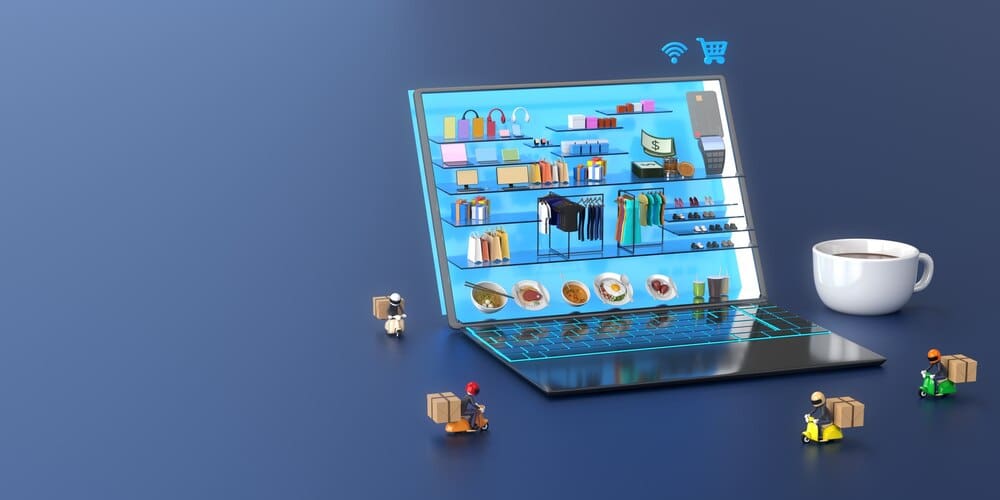In the hyper-competitive world of digital commerce, the fastest-growing brands are no longer built on custom code and massive server rooms, but on a sophisticated and interconnected web of Software-as-a-Service (SaaS) tools. These nimble companies, from disruptive direct-to-consumer (DTC) startups to rapidly scaling enterprises, are strategically assembling “tech stacks” of best-in-class applications to automate operations, personalize customer experiences at scale, and drive exponential growth. This shift, accelerated by a global pivot to online shopping, has democratized enterprise-level capabilities, allowing brands to focus their resources not on building infrastructure, but on building their brand and connecting with customers in a marketplace that demands agility and speed.
The E-commerce Backbone: Choosing the Right Platform
At the heart of any e-commerce operation is the platform itself. This is the central nervous system that manages products, processes orders, and handles payments. The choice of platform dictates a brand’s flexibility, scalability, and ability to integrate with the wider SaaS ecosystem.
Shopify and Shopify Plus
For a significant portion of high-growth DTC brands, Shopify has become the de facto starting point. Its reputation is built on an intuitive user interface, a reliable hosting infrastructure, and an unparalleled app marketplace that allows merchants to add functionality with a few clicks.
As brands grow and their needs become more complex, many graduate to Shopify Plus. This enterprise-level offering provides greater customization capabilities, including access to the checkout code, dedicated support, and higher API limits to handle massive traffic spikes during sales events like Black Friday.
BigCommerce
BigCommerce stands as a powerful competitor, particularly for businesses with more complex product catalogs or those operating in both B2C and B2B markets. It offers a robust feature set out of the box, often reducing the need for as many third-party apps for core functionality.
A key differentiator for BigCommerce is its “API-first” philosophy. This makes it a strong choice for brands that plan to adopt a headless commerce strategy or require deep, custom integrations with other business systems like Enterprise Resource Planning (ERP) software.
Headless Commerce Platforms
The most forward-thinking and technically ambitious brands are embracing headless commerce. This approach decouples the customer-facing front-end (the “head,” like a website or mobile app) from the back-end commerce engine that manages products and orders. Platforms like Commercetools, Fabric, and even the headless capabilities of Shopify and BigCommerce empower this model.
The primary benefit is ultimate flexibility. Brands can build completely unique, lightning-fast user experiences on the front-end using modern web technologies, while still relying on a powerful, scalable commerce engine on the back-end. This allows them to deliver content and commerce to any channel, from a website to a smart mirror, without being constrained by a traditional template.
Fueling Growth: The Marketing & Sales Stack
Once the foundation is set, growth is driven by acquiring new customers and maximizing the value of existing ones. This is where the marketing and sales SaaS stack becomes critical, enabling personalization and automation at a scale previously unimaginable.
Email & SMS Marketing
In an era of rising ad costs, owning your communication channels is paramount. Klaviyo has become the dominant force in e-commerce email and SMS marketing due to its deep integration with platforms like Shopify. It allows brands to create highly sophisticated automated flows based on customer behavior, such as abandoned cart reminders, post-purchase follow-ups, and personalized product recommendations.
For brands doubling down on mobile, dedicated SMS platforms like Attentive and Postscript are essential. With open rates that dwarf email, SMS marketing provides an immediate and personal channel to announce flash sales, new product drops, and provide shipping updates, driving both engagement and revenue.
Customer Data Platforms (CDPs)
As brands add more tools, customer data can become fragmented. A Customer Data Platform (CDP) like Segment solves this by acting as a central hub. It collects data from every customer touchpoint—website visits, purchases, support tickets, email opens—and creates a unified customer profile.
This single view of the customer is then fed back out to all other tools in the stack. This ensures that the personalization engine, the email platform, and the ad networks are all working from the same complete and up-to-date information, enabling a truly cohesive customer experience.
Reviews and User-Generated Content (UGC)
Trust is the currency of e-commerce, and nothing builds it faster than social proof. Tools like Yotpo and Okendo automate the process of collecting and displaying customer reviews, photos, and videos. These platforms go beyond simple star ratings, allowing brands to showcase authentic customer content directly on product pages.
This user-generated content not only boosts conversion rates by validating purchase decisions for new buyers but also provides valuable feedback for the brand and creates a community around its products.
Scaling Smart: Operations and Customer Experience
The fastest-growing brands understand that the customer journey doesn’t end at checkout. A seamless post-purchase experience is what creates repeat customers and brand advocates. A dedicated operational SaaS stack ensures this part of the business can scale without breaking.
Customer Support Helpdesks
Modern customer support is about speed and context. Helpdesks built specifically for e-commerce, such as Gorgias and Zendesk, are indispensable. They integrate directly with e-commerce platforms, pulling a customer’s entire order history and profile directly into the support ticket view.
This empowers support agents to resolve issues without having to switch between multiple systems. Furthermore, these platforms are increasingly leveraging AI to automate responses to common questions like “Where is my order?”, freeing up human agents to handle more complex and valuable customer interactions.
Shipping and Fulfillment
Managing the logistics of shipping is a major operational challenge. A shipping platform like ShipStation acts as a command center, aggregating orders from all sales channels and connecting to a wide array of carriers. It automates the creation of shipping labels, tracking, and customer notifications, saving countless hours of manual work.
For brands that outsource their warehousing and picking, SaaS tools are the bridge to their Third-Party Logistics (3PL) partners. Services like ShipBob combine a physical fulfillment network with sophisticated software that gives brands real-time visibility into inventory and order status across multiple warehouses.
Returns Management
Returns are an unavoidable part of e-commerce, but they don’t have to be a pure cost center. Innovative platforms like Loop Returns and Returnly transform the returns process into a positive brand touchpoint. Instead of a simple refund, these tools create an intuitive, self-serve portal that encourages customers to opt for an exchange or store credit.
By making it easy to swap for a different size or product, these SaaS tools help retain revenue, increase customer lifetime value, and gather valuable data on why products are being returned.
The Secret Sauce: A Cohesive, Integrated Stack
The true power of this SaaS-driven approach lies not in the individual tools, but in how they connect and share data. The most sophisticated brands build a cohesive, integrated stack where information flows seamlessly between applications, creating automations that drive efficiency and personalization.
This is made possible by integration platforms like Zapier or the more e-commerce-focused Alloy Automation. These tools act as a digital glue, allowing brands to create “if this, then that” workflows between apps without writing a single line of code. For example, a brand could create a workflow where a customer who leaves a positive review in Yotpo is automatically tagged in Klaviyo and sent a personalized thank-you offer, creating a delightful and automated experience.
The Future is Composable
The era of the monolithic, all-in-one software suite is fading. The future of e-commerce technology is “composable,” where brands assemble a flexible, best-in-class stack tailored to their specific needs. This modular approach allows for unparalleled agility, enabling companies to swap tools in and out as they scale or as new, better solutions emerge.
By leveraging the power of specialized SaaS, modern e-commerce brands can outsource the complexities of infrastructure, logistics, and data management. This frees them to focus on what truly matters: building an authentic brand, creating exceptional products, and fostering a lasting relationship with their customers, ultimately giving them the power to compete and win on a global stage.








